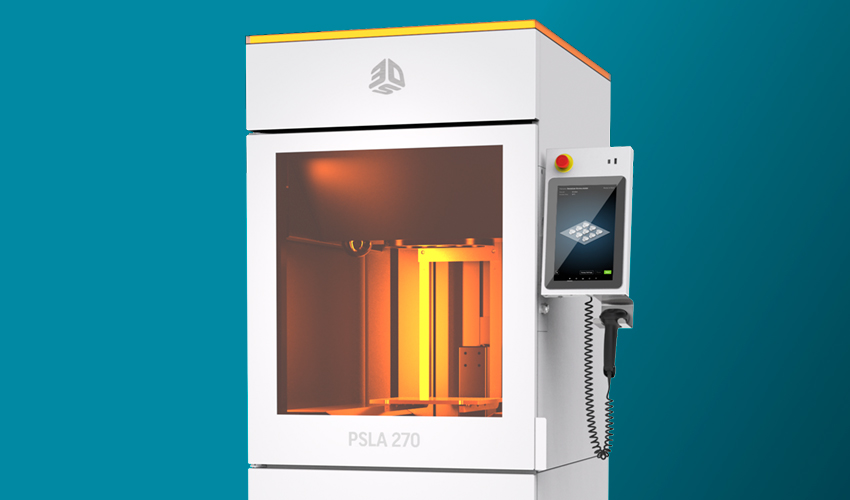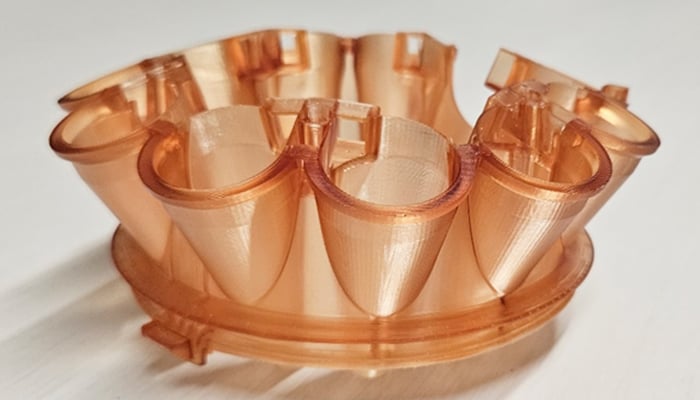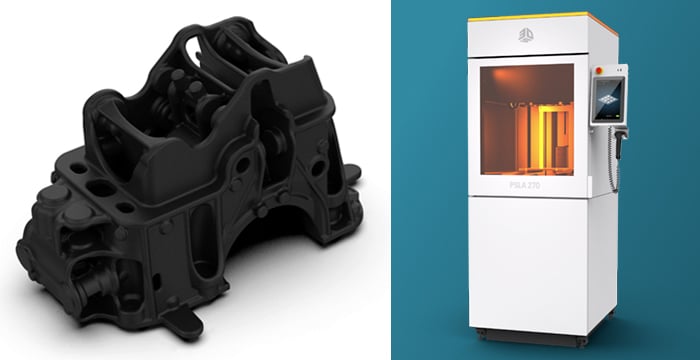New PSLA 270 from 3D Systems Combines Projection Technology Speed with SLA Quality

Until now, there has been no solution in the additive manufacturing market that meets the requirements of high productivity, injection molded quality high resolution, long-lasting durability and part size. In response to this demand, 3D Systems has unveiled a new resin 3D printer, the PSLA 270. The PSLA 270 will be previewed during RAPID + TCT in Los Angeles, California, so don’t hesitate to visit 3D Systems booth 2401 to see this new 3D printer with your own eyes!
As we know, nowadays, there are different 3D printing technologies that fall under the vat photopolymerization umbrella, including SLA, DLP and MSLA, among others. The main difference between the first two is in the manufacturing speed, as well as in the surface quality of the final parts. While stereolithography (SLA) offers high precision and quality using a laser, we cannot deny that it is a slower process. On the other hand, projector-based raster printing technologies stand out for printing speed, although the results do not always achieve parity in quality. Now, 3D Systems has combined the best of both worlds in its new PSLA 270, a solution that offers the quality and first-article reliability of SLA technology with the speed and scalability of raster-based projector printing

The machine combines the speed of projection with the quality of SLA
Features of the 3D Systems PSLA 270
Building on more than 35 years of 3D Systems’ experience in providing fully integrated additive manufacturing solutions, this system encompasses the entire production process, from software, hardware, printing, materials and post-processing to global support and professional application consulting. The technology of this new solution derives its name from the use of a projector as a light source in a process based on stereolithography (Projector-based SLA or PSLA).
It is intended for all industrial companies looking for high manufacturing speed in a mid-size printer. In addition to offering high reliability, precision and ease of use, it promises an equally high success rate from the first part.
According to the 3D Systems team, the PSLA 270 is up to 5 times faster than other SLA 3D printers. Thus, users get to multiply production with an intermediate manufacturing footprint for an SLA 3D printer. It also offers a generous manufacturing volume in a compact and configurable footprint size, ideal for installation in small laboratories, automated factories and offices. In terms of materials, it is very versatile, as it is compatible with functional and high-quality, production resins. It integrates a large cartridge system that supports fast changeovers between materials. The 3D Systems team notes, “The PSLA 270 guarantees the highest quality parts, the most stable mechanical properties, with the highest repeatability and the shortest lead time.”

The PSLA 270 from 3D Systems is up to 5 times faster than other resin 3D printers
The PSLA 270 offers peace of mind and makes the experience with the technology more productive, reliable and easier to handle. This is a great combination in terms of productivity, as it ensures success from the first part in terms of precision, aesthetics and mechanical performance. 3D Systems leverages additional workflow and post-processing components to deliver a full, an end-to-end solution. These components include 3D Sprint software, industry leading production-grade Figure 4 materials, and a refreshed family of wash and curing offerings.
3D Systems has not yet mentioned a specific price range for the PSLA 270, but they claim that it will be cost competitive compared to other mid-size SLA solutions on the market today. Although the machine won’t be available for a few months, you can visit booth 2401 at RAPID + TCT 2024 now to get a first look at this 3D printer in person or check out the website HERE!
What do you think of the new PSLA 270 3D printer from 3D Systems? Let us know in a comment below or on our LinkedIn, Facebook, and Twitter pages! Don’t forget to sign up for our free weekly newsletter here for the latest 3D printing news straight to your inbox! You can also find all our videos on our YouTube channel.
*All Photo Credits: 3D Systems







Noone heard of the Lumia X1 3D? (https://www.axtra3d.com/lumia-x1/)
Its doing basically exactly this combination for a while now…